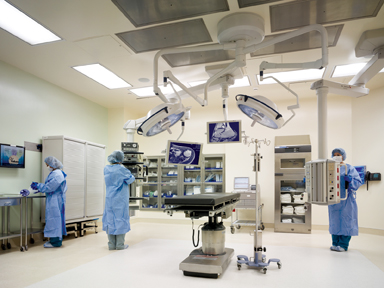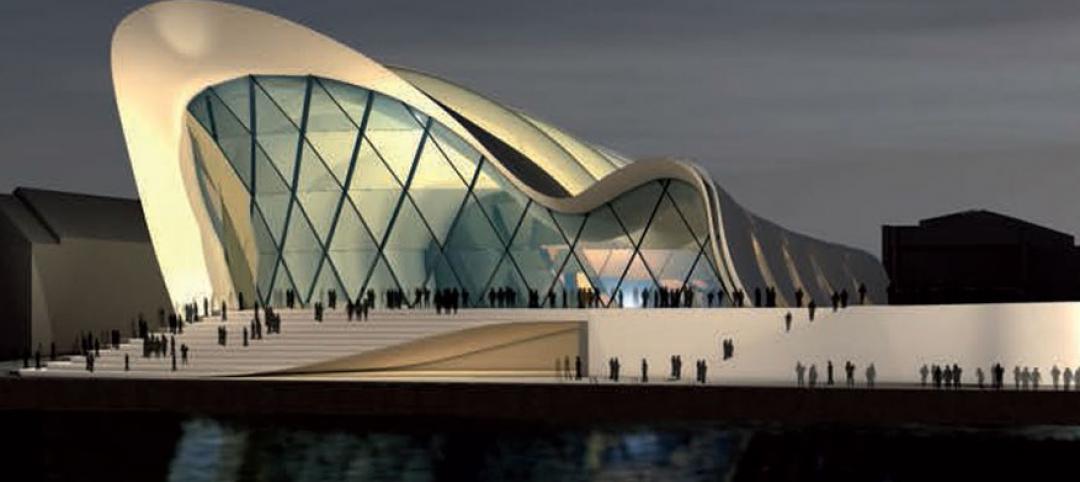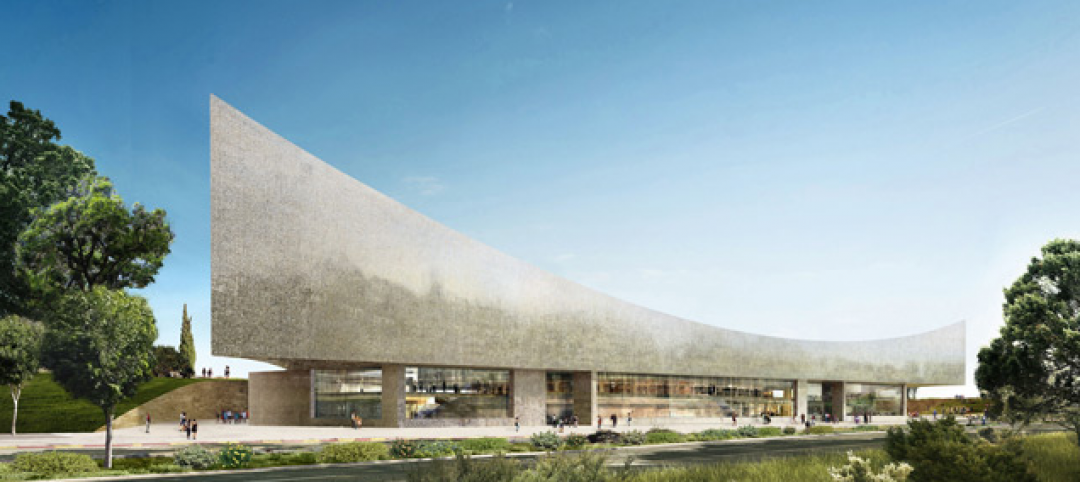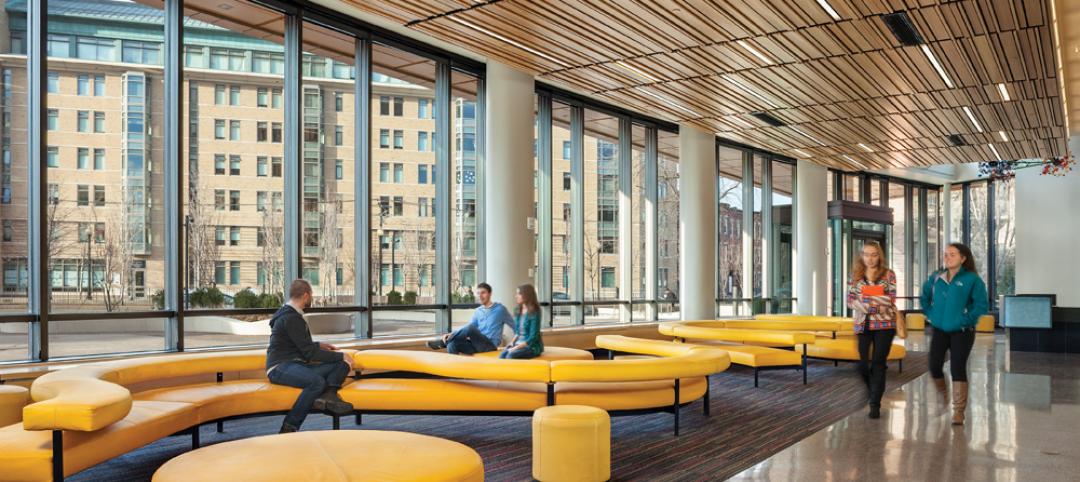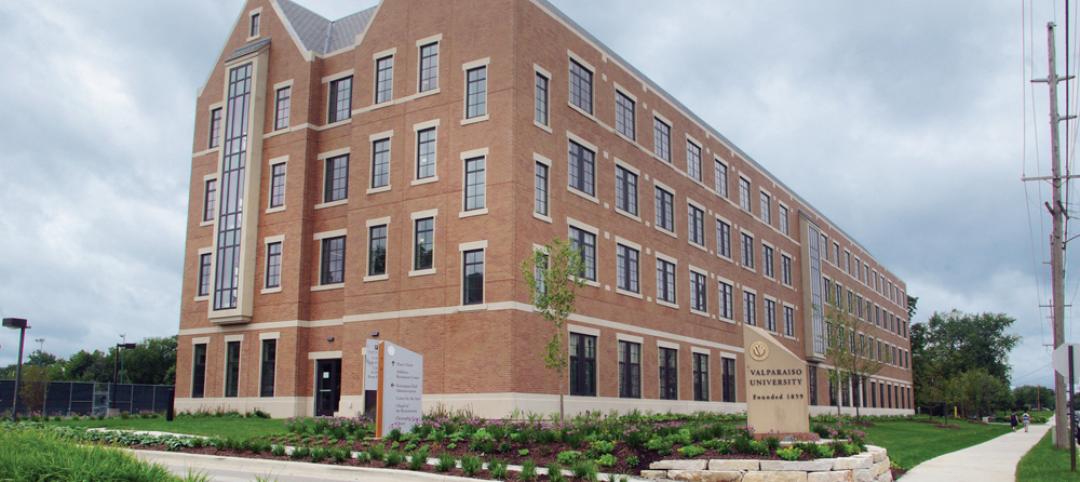The healthcare sector faces grave financial uncertainties, even with the June 28 Supreme Court decision upholding the Affordable Care Act. To help us sort out the factors impacting this lucrative segment, we turned to Philip Tobey, a Fellow of both the AIA and the American College of Healthcare Architects and Senior Vice President with SmithGroupJJR.
“Health industry providers legitimately expect significant efficiencies and lower costs for design and construction services, to go along with the economies that they themselves face with tighter and value-based reimbursement terms under health reform,” says Tobey, a member of Building Design+Construction’s Editorial Board.
In other words, AEC firms are going to have to share some of their healthcare clients’ pain. The drive for greater operational efficiency and lower cost in healthcare will be unrelenting, with bundled payments and shared savings models in lieu of traditional fee-for-service reimbursement forcing healthcare providers to eliminate wasteful practices.
Tobey sees three major trends emerging: 1) growing emphasis on ambulatory care, 2) medical systems integration, and 3) the “bundling/unbundling” of services.
SCROLL DOWN FOR GIANTS 300 TOP 25 AEC HEALTHCARE FIRM RANKINGS
1. PUSHING AMBULATORY CARE FACILITIES OUT
“The trend to push services out of the hospital into ambulatory settings will only intensify,” says Tobey. He notes, however, that there will be an “overwhelming need” to expand the front end of delivery—primary care, urgent care, and emergency departments—and to rationalize procedural and imaging resource capacity. At the same time, freestanding surgery and imaging centers may not be as prevalent in the future, and may need to be consolidated into larger hospital centers.
“Hospitals are not going away,” says Tobey, even though inpatient volumes are predicted to fall 5%, vs. 30% growth in outpatient volume. The sheer increased volume of patients, especially as baby boomers age, will inevitably drive up acute-care admissions. In the face of these seemingly countervailing trends, says Tobey, “The need to renovate outdated or obsolete facilities will be a strong driver in the healthcare business.”
2. INTEGRATING MEDICAL SYSTEMS MORE TIGHTLY
Tobey says the need for greater efficiency and ever-higher quality of care are not new goals for medical care or medical design, but hospital systems are being encouraged further by healthcare reform to streamline processes, with more mergers, acquisitions, and hospital-physician staff integrations on the horizon. “The industry’s even been talking about including services like long-term care and home care into this integrated approach,” he says.
Although there will always be a need for acute-care hospitals, Tobey sees a possible shift toward more community-based portals. As health systems continue to integrate, they will rely more and more on treatment venues outside the hospital to provide patients with coordinated preventive care and treatment for chronic conditions.
The IT component of hospital systems is already a natural for systems integration. “Providing the right information where it’s needed is essential for clinical care,” says Tobey, who foresees greater implementation of electronic medical records.
Are hospitals ready for lean?
“Everybody’s talking about it, but many hospital owners are wary of taking on lean,” says SmithGroupJJR’s Phil Tobey, FAIA, FACHA, whose firm is on the team for Sutter Health’s California Pacific Medical Center in San Francisco, the largest lean project in the U.S. “You have Sutter, which is totally lean, then you have clients who tell us not even to mention the word,” he says. “Others are applying the basic principles of lean construction without carrying the heavy weight of all that lean entails.”
Applying Lean/Six Sigma principles to healthcare, says Jeffrey C. Stouffer, AIA, a Principal with HKS, would result in “measurable outcomes and even risk sharing as part of the design and construction process” by eliminating unnecessary waste in construction and operations and increasing staff efficiency and safety, while reducing energy and staff costs for the hospital.
3. UNBUNDLING/BUNDLING OF HEALTHCARE SERVICES
Healthcare providers are “decanting” non-core functions—services like pharmacy, lab support, materials handling, and environmental management—from the mother ship into cheaper B-occupancy buildings. “Anything soft, anything that’s not high-tech, is being taken out,” says Tobey. “That’s the unbundling.”
However, once the unbundling of less-intense services has been accomplished, says Tobey, some hospital systems are opting to bundle the remaining hospital space, by placing beds back on top of the structure’s base diagnostic and support block, instead of having the traditional diagnostic/support chassis with attached nursing wings.
“You unbundle and decant the support services, then take the remaining high-intensity hospital base and put the beds on top,” says Tobey. A recent study for a 100-bed community hospital found that following such a scheme would result in 39% savings in construction costs per bed. +
TOP 25 HEALTHCARE SECTOR ARCHITECTURE FIRMS
| Rank | Company | 2011 Healthcare Revenue ($) |
| 1 | HDR Architecture | 205,200,000 |
| 2 | HKS | 124,736,964 |
| 3 | Perkins+Will | 122,895,589 |
| 4 | Cannon Design | 121,000,000 |
| 5 | NBBJ | 116,401,000 |
| 6 | HOK | 102,695,248 |
| 7 | SmithGroupJJR | 74,600,000 |
| 8 | RTKL Associates | 68,421,405 |
| 9 | Perkins Eastman | 63,700,000 |
| 10 | Hammel, Green and Abrahamson | 61,900,000 |
| 11 | ZGF Architects | 54,338,355 |
| 12 | Heery International | 48,583,000 |
| 13 | HMC Architects | 42,715,899 |
| 14 | PageSoutherlandPage | 38,670,000 |
| 15 | IBI Group | 37,349,554 |
| 16 | Skidmore, Owings & Merrill | 33,950,000 |
| 17 | FKP Architects | 33,947,200 |
| 18 | Gresham, Smith and Partners | 32,876,981 |
| 19 | FreemanWhite | 28,500,000 |
| 20 | RBB Architects | 28,500,000 |
| 21 | LEO A DALY | 26,900,325 |
| 22 | BSA LifeStructures | 26,323,759 |
| 23 | EwingCole | 24,000,000 |
| 24 | KMD Architects | 20,161,678 |
| 25 | Ennead Architects | 19,875,000 |
TOP 25 HEALTHCARE SECTOR ENGINEERING FIRMS
| Rank | Company | 2011 Healthcare Revenue ($) |
| 1 | AECOM Technology Corp. | 314,000,000 |
| 2 | Stantec | 109,980,000 |
| 3 | URS Corp. | 41,298,918 |
| 4 | Smith Seckman Reid | 38,300,000 |
| 5 | Jacobs | 32,950,000 |
| 6 | Parsons Brinckerhoff | 30,600,000 |
| 7 | KPFF Consulting Engineers | 28,000,000 |
| 8 | TTG|TMAD TAYLOR & GAINES | 27,677,900 |
| 9 | Mazzetti Nash Lipsey Burch | 24,988,296 |
| 10 | Degenkolb Engineers | 22,454,591 |
| 11 | Allen & Shariff | 21,577,769 |
| 12 | Bard, Rao + Athanas Consulting Engineers | 18,000,000 |
| 13 | ccrd partners | 17,100,000 |
| 14 | Atkins North America | 16,173,240 |
| 15 | AKF Group | 15,200,000 |
| 16 | KJWW Engineering Consultants | 14,607,369 |
| 17 | Syska Hennessy Group | 14,462,238 |
| 18 | Zak Companies | 13,882,705 |
| 19 | TLC Engineering for Architecture | 13,874,283 |
| 20 | Dewberry | 10,613,564 |
| 21 | Thornton Tomasetti | 9,860,000 |
| 22 | Sparling | 9,658,825 |
| 23 | Walter P Moore | 7,718,326 |
| 24 | M/E Engineering | 7,700,000 |
| 25 | Rutherford & Chekene | 7,650,000 |
TOP 25 HEALTHCARE SECTOR CONSTRUCTION FIRMS
| Rank | Company | 2011 Healthcare Revenue ($) |
| 1 | Turner Corporation, The | 1,807,050,000 |
| 2 | McCarthy Holdings | 1,231,000,000 |
| 3 | Gilbane Building Co. | 1,091,777,000 |
| 4 | Clark Group | 1,067,411,678 |
| 5 | PCL Construction Enterprises | 869,130,091 |
| 6 | Brasfield & Gorrie | 833,522,003 |
| 7 | Skanska USA | 724,418,042 |
| 8 | JE Dunn Construction | 636,206,095 |
| 9 | Robins & Morton | 599,073,000 |
| 10 | DPR Construction | 588,199,172 |
| 11 | Whiting-Turner Contracting Co., The | 464,779,240 |
| 12 | Mortenson | 455,620,000 |
| 13 | Lend Lease | 434,626,482 |
| 14 | Hensel Phelps Construction | 425,760,000 |
| 15 | Suffolk Construction | 420,343,563 |
| 16 | Pepper Construction Group | 415,064,000 |
| 17 | Tutor Perini Corp. | 409,583,000 |
| 18 | Balfour Beatty US | 389,253,907 |
| 19 | Hunt Construction Group | 369,500,000 |
| 20 | Hoar Construction | 313,937,000 |
| 21 | Flintco | 291,400,000 |
| 22 | Layton Construction | 287,300,000 |
| 23 | HBE Corp. | 279,200,000 |
| 24 | Power Construction | 275,000,000 |
| 25 | Swinerton | 274,627,440 |
Related Stories
| Nov 12, 2014
Designs by three finalists for new Beethoven concert hall unveiled
David Chipperfield and Valentiny are among the finalists for a new concert hall being built to commemorate Beethoven’s 250th birthday in his hometown of Bonn, Germany.
| Nov 12, 2014
Forbes: Houston is America's #1 construction hotspot
A new list of America's 20 biggest boomtowns shows Houston on top, with New York City close behind, followed by Dallas, Washington, D.C., and Los Angeles.
| Nov 11, 2014
Must see: Artist pairs up Hollywood icons with famous modern architecture
In his latest series, Federico Babina illustrated 17 iconic Hollywood personalities, from Marilyn Monroe to Michael Caine, interacting with famous 20th century homes.
| Nov 11, 2014
Renzo Piano's third building at London Bridge Quarter approved, will be built adjacent to the Shard
Renzo Piano Building Workshop has been granted planning approval for its residential building at London Bridge Quarter—a 26-story apartment tower dubbed Feilden House.
| Nov 10, 2014
5 guiding principles for solving airflow issues in open-plenum office spaces
Although architecturally appealing, exposed ceilings can create unwanted drafts and airflow problems if not engineered correctly. McGuire Engineers' Bill Stangeland offers tips for avoiding airflow issues on these projects.
| Nov 10, 2014
Clemson, Parsons architecture education programs honored for innovation, long-term impact
The architecture programs at Parsons The New School for Design and Clemson University have been selected as 2014 NCARB Award recipients for developing innovative curricula that merge practice and education.
| Nov 10, 2014
Herzog & De Meuron unveils plan for National Library of Israel
The library’s new home will be a completely new building in Jerusalem, and will combine the functions of a central research center, a venue for indoor and outdoor cultural and educational activities, and a place for digital experience.
| Nov 10, 2014
Hotel construction pipeline hits five-year high
The hotel construction pipeline hit a five-year high in the third quarter, clocking in at 3,516 projects and 443,936 rooms, Lodging Econometrics reports.
| Nov 7, 2014
Arts college uses creative financing to build 493-bed student housing
Many states have cut back funding for higher education in recent years, and securing money for new housing has been tougher than ever for many colleges and universities. A recent residence hall project in Boston involving three colleges provides an inspiring example of how necessity can spawn invention in financing strategies.
| Nov 7, 2014
Prefab helps Valparaiso student residence project meet an ambitious deadline
Few colleges or universities have embraced prefabrication more wholeheartedly than Valparaiso (Ind.) University. The Lutheran-based institution completed a $27 million residence hall this past summer in which the structural elements were all precast.


